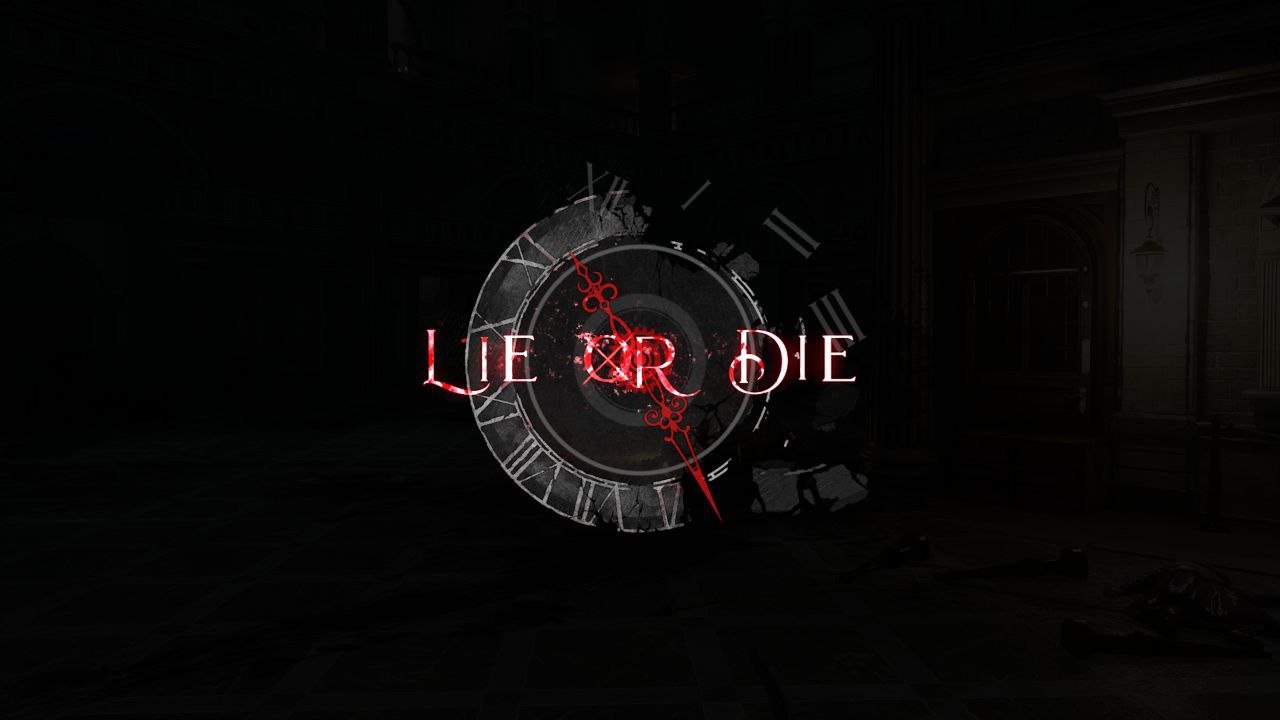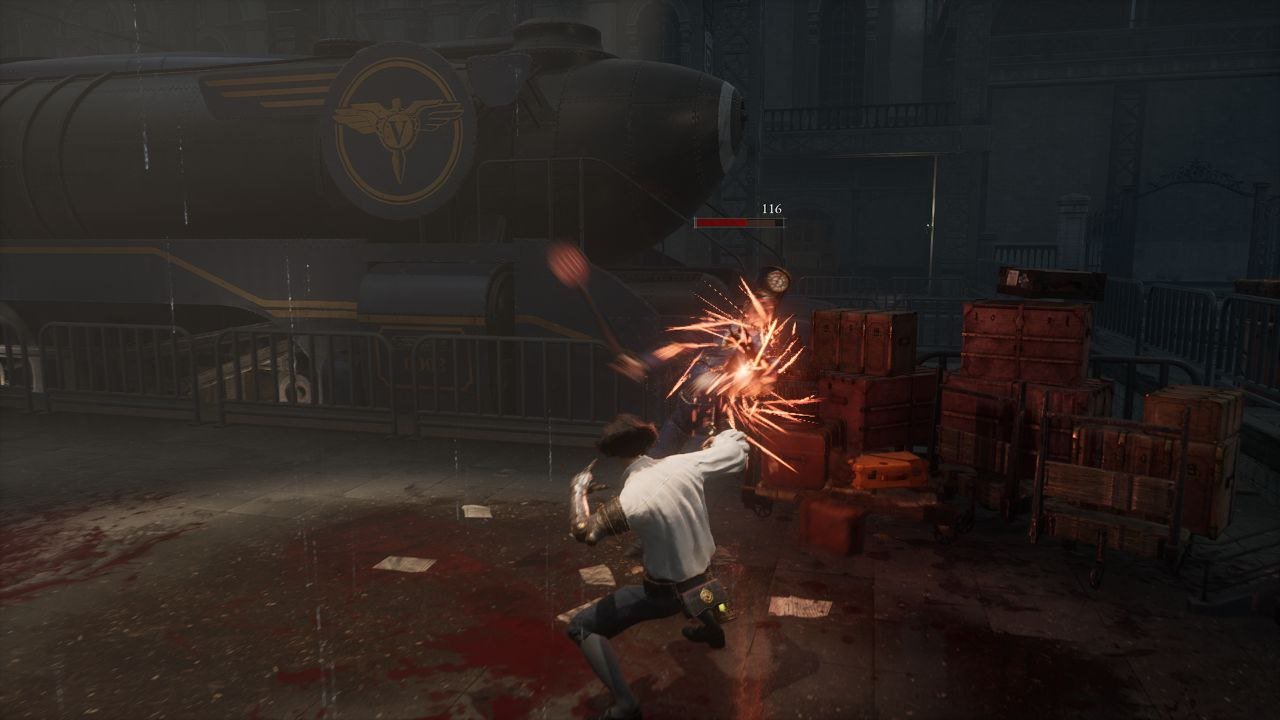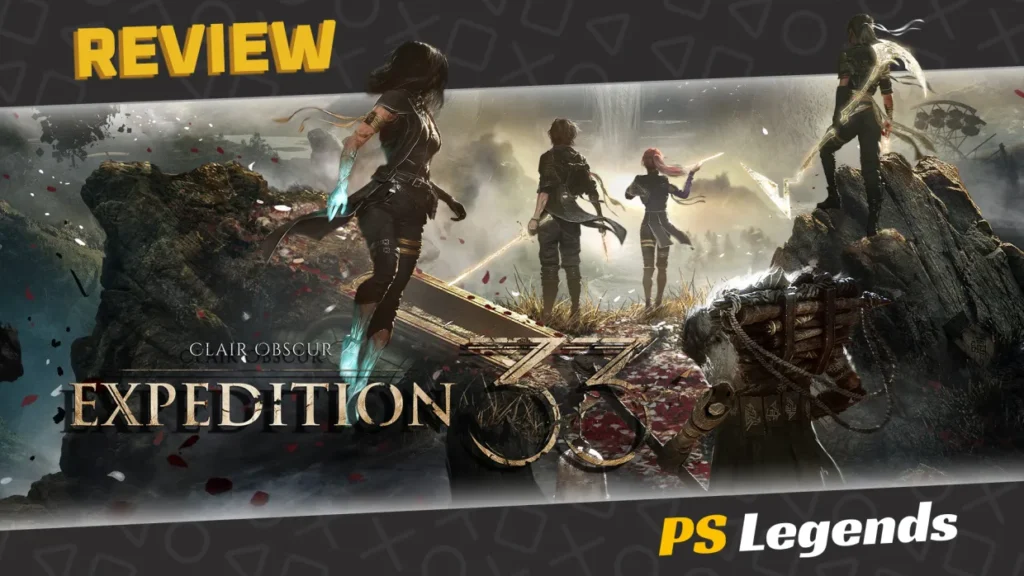Ever since Bloodborne was released in 2015, fans have been eagerly asking for a sequel (or even a PlayStation 5 remake). As of now, From Software has not committed to a proper sequel to the game, instead focusing on other projects, like Eldern Ring, which has received universal acclaim from critics and fans.
However, many developers were inspired by Bloodborne, and some tried to replicate From Software’s formula in their way. And this is where Neowiz Games and their Lies of P come into play.
On This Page
Introduction
Lies of P has two main sources of inspiration, which are both equally evident from the very beginning of the game. The first is “The Adventures of Pinocchio”, a classic tale written in 1883 by Carlo Collodi, while the second is the aforementioned Bloodborne. If you’ve played through From Software’s game, you will immediately recognize its influence in almost every aspect of the game.
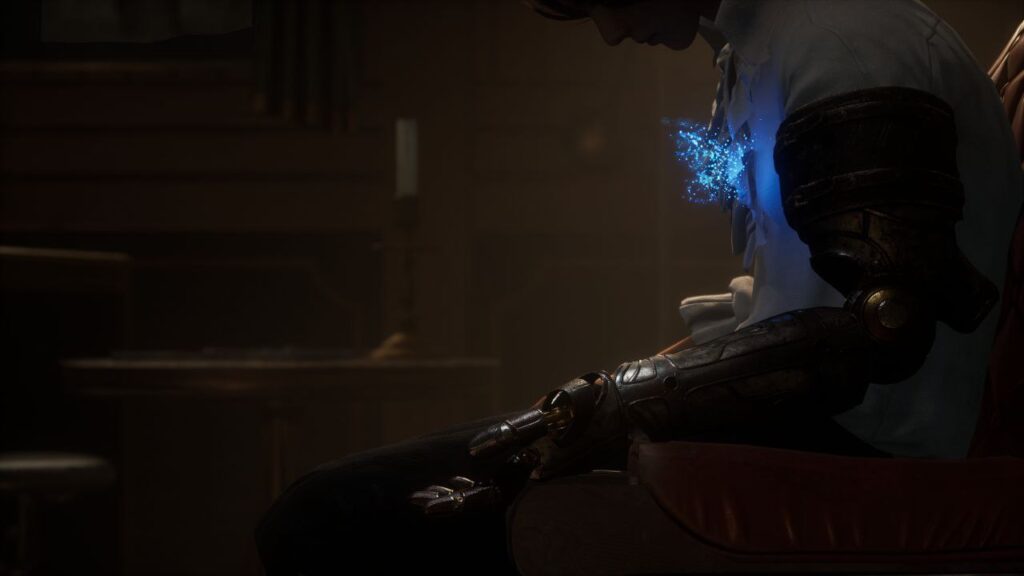
Taking inspiration from cult classics is a double-edged weapon. On one hand, you will probably have an easier time drawing players’ attention, especially if there’s little competition on the market (and arguably there aren’t many great Bloodborne-inspired games out there).
On the other hand, though, players will be much more demanding towards your game, so you need to be quite confident about your project.
With that being said, things went pretty well for Lies of P. With a sequel already confirmed to be in development, it’s safe to say that the game managed to gain its fanbase. But how did it achieve this result?
Story
Lies of P takes place in the fictional city of Krat. In the past, humans became able to build human-like puppets, using a power source called Ergo, which was found underneath the city. Among the most well-known creators of puppets, were Lorenzo Venigni and Geppetto, who created the game’s protagonist, Pinocchio.
These puppets were human-like in almost every way, and they were used by humans to perform every kind of menial labor for them. To make sure that the puppets would never become a menace, they were bound to the Great Covenant, which forbade them from attacking humans and telling lies.
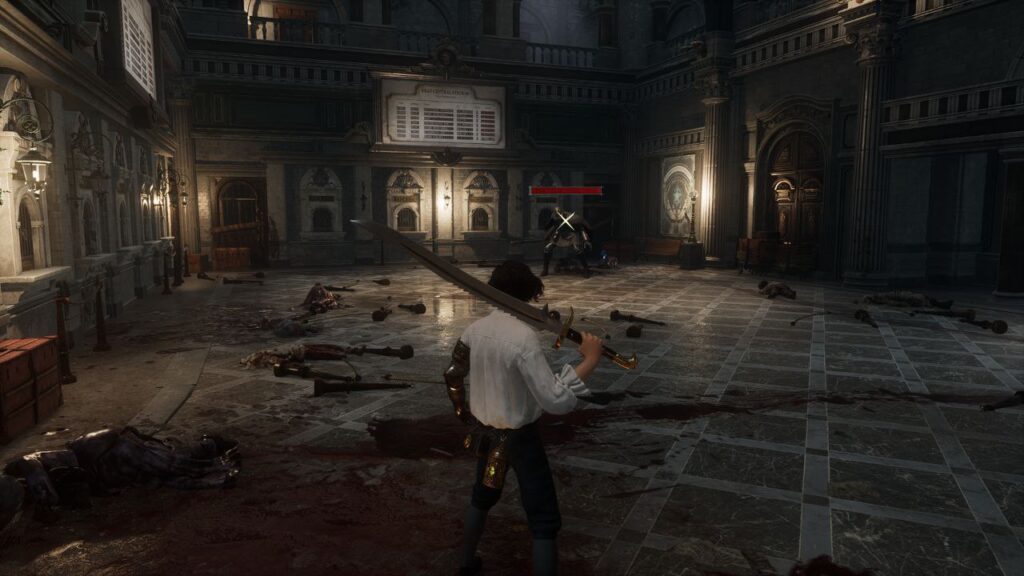
One day, however, the puppets revolted and slaughtered almost the entire population of Krat.
In the present day, Pinocchio awakens in an abandoned train, with little to no clue about why is there or what he’s supposed to do. After reaching Hotel Krat, he meets a mysterious woman named Sofia, who instructs him to find his creator Geppetto to stop the puppets’ revolt.
As you have probably already guessed, the game’s plot has very little to do with the source material. Lies of P is not an adaptation of The Adventures of Pinocchio, and it’s not even a darker re-imagining of the tale.
It’s more like the developers created their world and setting and used some elements and cues from the book in it. Even characters from the book serve very different purposes than their original counterparts, so don’t look for Geppetto expecting a lovely old grandpa, because that’s not who he is in this world.
Much of the story revolves around Pinocchio’s ability to lie, a unique feature of puppets in Krat. This will come into play many times throughout the game, and while we don’t want to spoil what happens, we found this a clever way to make the game’s protagonist unique, while paying homage to the book at the same time.
Bloodborne’s influence is much evident as well, starting from the game’s setting. Krat is a fascinating location, which takes a lot of cues from Yarnham. Exploring Krat feels like seeing a decadent version of the Belle Epoque France. Some events call back to From Software’s game. For instance, at one point in the game, you will meet an elderly woman, hidden inside a house. You won’t be able to see her, but if you get close to the door of her house she will speak to you and ask you to retrieve a doll.
This kind of reference is scattered throughout the game, and if you’re a fan of Bloodborne you will enjoy counting every single homage the developers paid to that game.
However, there are some blatant differences, mainly in how the plot is told. This is not a Myazaki-directed game, so you will know what’s happening most of the time. The plot itself is quite good, and the game has a nice world-building which sets the stage for future installments in the series.
Gameplay
If Bloodborne’s influence is already evident in the tone and setting of the game, it becomes even more apparent in the gameplay department.
At the beginning of the game, you will be able to choose between three settings for Pinocchio. One is based on pure strength, another on dexterity, and the third one offers a more balanced approach to combat. To be honest, you don’t have to worry about this choice all that much. Throughout the game, you will find many weapons and items that will have a deep impact on your stats, so you won’t be tied to your initial choice in any way.
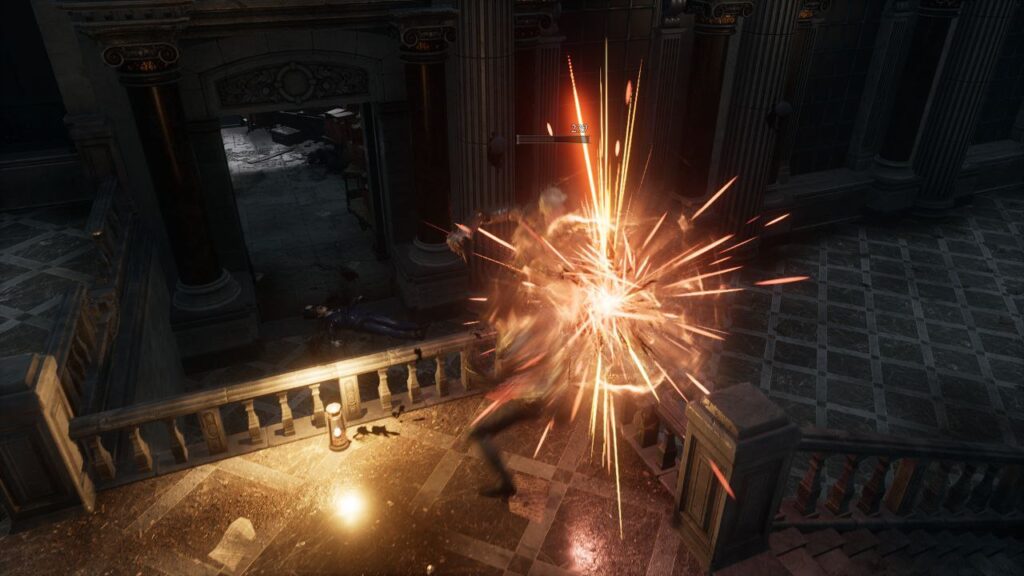
Regardless of the setting you chose, Lies of P plays almost exactly like every other soulslike game. You need to study enemy patterns to dodge or parry their attacks, and you need to understand whether it’s best to use a light or heavy attack in any given situation.
One of the most interesting mechanics in the game is the ability to combine pieces of different weapons. In most cases, you will be able to combine different hilts and blades between them. This creates a seemingly infinite amount of possibilities: for example, you can combine a long hilt with a sickle to get a weapon that can be used from a distance but that has also a wide range, or you can combine a hammer to a hilt with better maneuverability to get a quicker weapon without losing its destructive power.
Lies of P allows for many different gameplay styles, and throughout the game, you will figure out what’s best for you. However, the game generally encourages you to be much more aggressive when compared to other Soulslike games, because you get a small amount of health back when you attack, and you also have a chance to stun enemies after repeated attacks. Of course, you can still choose a more cautious approach to combat, but you can be much bolder when it comes to facing enemies in Lies of P.
Pinocchio also has a mechanical arm that can be equipped with items you find throughout the game. They’re mostly used in combat, which is a shame because we expected it to have a greater impact on exploration as well.
All in all, the game doesn’t stray away from the path paved by Bloodborne. And while it replicates Bloodborne’s formula quite well, this does come at a price.
The biggest problem with Lies of P is precisely that it takes too much inspiration from Bloodborne, acting as if the game came out yesterday, while eight years have already passed since the game’s release. By today’s standards, Pinocchio feels too stiff and slow to control, something that was not that noticeable for Bloodborne in 2015, but it is for Lies of P in 2023.
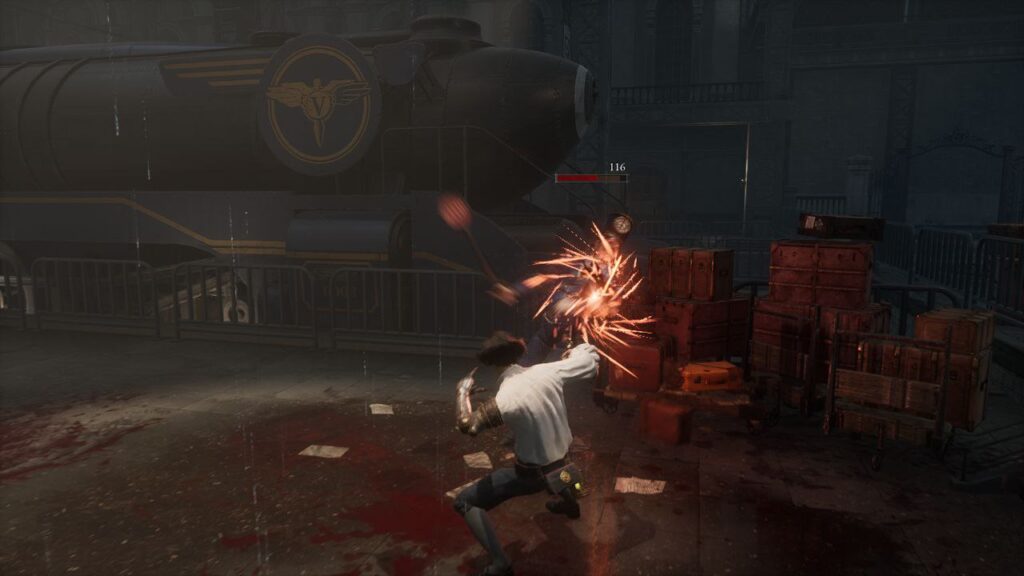
One more problem comes from difficulty, which can ironically feel way too high or way too low depending on your background as a player. Being soulslike, the game is indeed difficult to grasp at the beginning, and it will take you some training before you’re able to face even basic enemies without sweat. However, if you’re a seasoned soulsike player, you will probably have an easy time with most enemies, and only a handful of bosses will be a problem for you. This happens also because it’s really easy to backstab enemies if you know how to time your attacks.
With a DLC soon and a sequel already in development, we can only hope that developers will address these problems sooner or later because this series has potential.
Graphics/Sound
Lies of P looks and sounds great on PlayStation 5. If you take into consideration that this is a mid-budget game from an unknown studio, the result is simply amazing. While the visuals themselves are quite good, it’s the art direction that helps the game stick out. As we mentioned before, the game is heavily influenced by Bloodborne and its Yarnham, but Krat manages to be its own thing as well. It takes elements from the Belle Epoque aesthetic and it transforms them into something decadent, with some steampunk influences here and there throughout the game.
During our playtime, we didn’t notice any kind of technical issues, and loading times are really low, something that is very much appreciated in a game where you will probably die an awful lot of times.

Replayability
Completing Lies of P will take more or less 30 hours on the first run. The game has quite a few side quests, which can add some more playtime. That being said, the game offers multiple reasons to play the adventure from the start once you’ve finished it. Even if you did every single side quest available, the game still has some narrative crossroads and three different endings, which can’t be obtained in the same playthrough.
You can also play through the game a second time to test a different build, and you can choose whether to carry some elements over in New Game + or start from scratch on a new save file.
All in all, if you’ve enjoyed your time in Krat you will find a reason to spend some more time in this twisted world.
Conclusion
Lies of P is much more than a simple Bloodborne clone. The game is a solid soulslike set in an intriguing, dark world that takes some cues from the story of Pinocchio, using those characters to do something entirely new and different. If you’re a soulslike fan, you will have a great time with Lies of P, and you will find yourself hungry for more once the credits roll.
Joys
- Great world-building and atmosphere
- Solid gameplay
- A smart take on Pinocchio’s tale
Cons
- Pinocchio feels too stiff and slow at times
- It can be too easy or too difficult depending on your abilities


